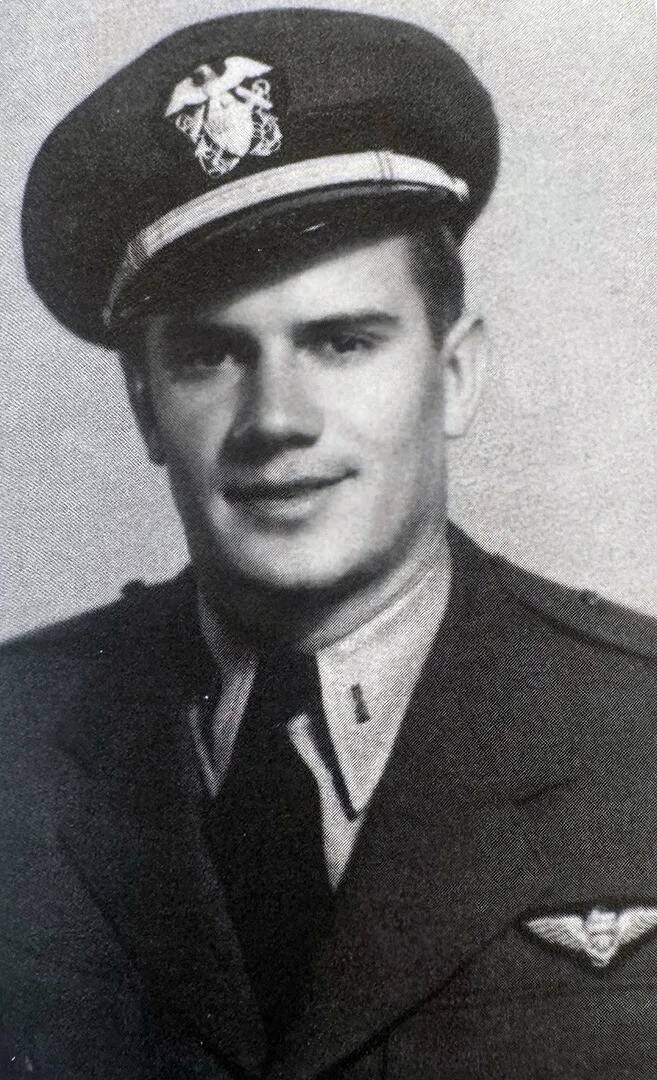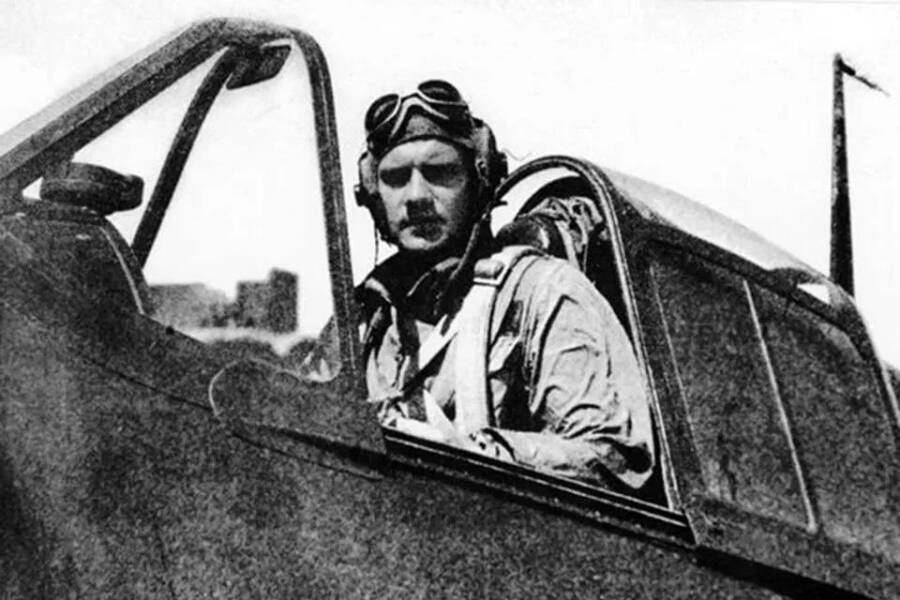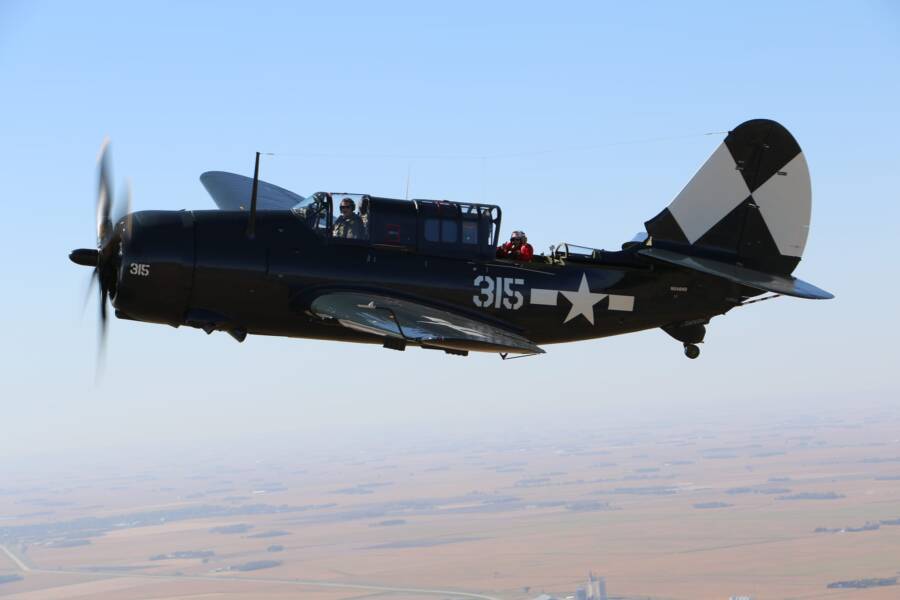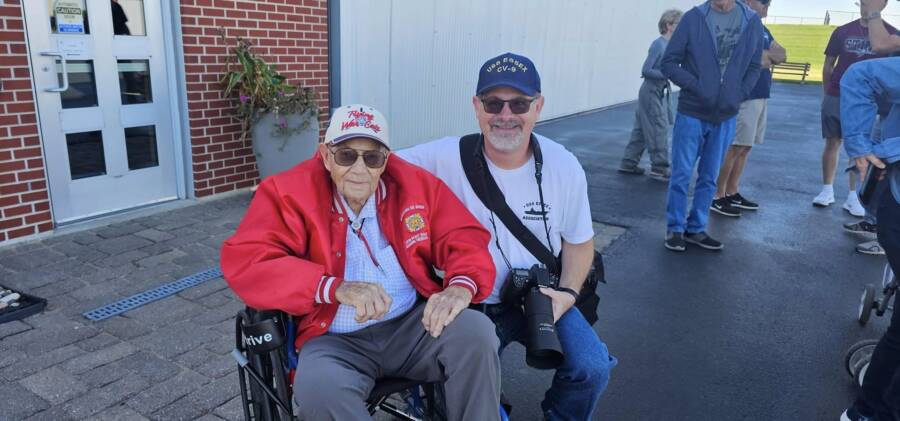Donald McPherson served as a U.S. Navy pilot in the Pacific Theater during World War II and shot down five Japanese planes.

U.S. Navy/National WWII MuseumDonald McPherson, the last surviving American ace pilot of World War II.
At the end of World War II, the United States had more than 1,000 pilots who were considered “aces” because they’d shot down five or more enemy planes. But now, the last American ace pilot of the conflict has died. Donald McPherson passed away at the age of 103 on August 14, 2025.
A U.S. Navy pilot who fought in the Pacific Theater, McPherson shot down five Japanese planes in the final months of World War II, earning him the Congressional Gold Medal and three Distinguished Flying Crosses. According to his family, however, McPherson wished to be remembered first for his faith, then his family, and finally his “service to his country.”
The Last Surviving Ace Pilot Of World War 2
According to a statement from the World War II Museum, Donald McPherson’s wartime service began on Jan. 5, 1943, when McPherson, then 20 years old, enlisted in the U.S. Navy.

U.S. Navy/National WWII MuseumDonald McPherson became a pilot with the U.S. Navy during World War II.
After completing training in Corpus Christi, Texas, McPherson was assigned to fly a Grumman F6F Hellcat fighter as part of Fighter Squadron 83. He and his squadron traveled to the Pacific Theater in 1945 to serve aboard the USS Essex during the Battle of Okinawa. There, McPherson quickly got a taste of the high stakes of warfare when a Japanese kamikaze pilot clipped the radar tower of the Essex during an attack on the U.S. fleet on his second evening aboard the ship.
“This sure made us wonder what we had gotten ourselves in for,” McPherson recalled.
His job as a pilot was to defend U.S. ships from Japanese attacks, and McPherson was soon flying dangerous missions in the Pacific Theater. One day, he noticed two Japanese planes flying low over the water and opened fire. After shooting down the first, McPherson performed a “wingover” — a maneuver that involved shooting one’s plane straight up into the air — and then wheeled around to take a shot at the second one.
“By using full throttle, my Hellcat responded well, and I squeezed the trigger and [the second plane] exploded,” McPherson recalled in a tribute video shared by the Fagen Fighters WWII Museum. “Then I turned and did a lot of violent maneuvering to try to get out of there without getting shot down.”
When he returned from the mission, McPherson realized how close he’d come to disaster.

Fagen Fighters WWII Museum/FacebookDonald McPherson — in red, sitting in the back of the plane — taking a ride during a visit to the Fagen Fighters WWII Museum in 2024.
“I did go home that day with a hole or two in my plane,” he recalled in the video. “When I landed, the plane captain said, ‘I see you picked up a little lead today.’ And I said, ‘Well, yeah? Whereabouts?’ And he said, ‘Well, there’s a hole about a foot behind your back.'”
Ultimately, Donald McPherson shot down five planes during World War II, which made him an “ace” pilot. In all, his fighter squadron destroyed a total of 220 airborne Japanese planes and 72 grounded aircraft.
Despite his impressive service, however, Donald McPherson found other things to value in life aside from his war record.
Donald McPherson, A Man Of Faith And Family
After World War II, Donald McPherson returned to Nebraska, where he’d been born in 1922. He also returned to his wife, his high school girlfriend, Thelma Johnston, whom McPherson had married before shipping out to the Pacific.

Fagen Fighters WWII Museum/FacebookDonald McPherson at the Fagen Fighters WWII Museum in 2024.
McPherson and his wife had four children and, according to his obituary, he spent most of his life as a farmer and a letter carrier. In his free time, he enjoyed woodworking, welding, hunting, and fishing, and he was involved in the Adams United Methodist Church, the Boy Scouts, and his local chapter of American Legion and Veterans of Foreign Wars (VFW). He also helped establish baseball and softball leagues in his community.
Though he was proud of his war service, McPherson valued his faith above all else.
“When it’s all done and Dad lists the things he wants to be remembered for… his first first thing would be that he’s a man of faith,” McPherson’s daughter Beth Delabar told the Beatrice Daily Sun, a local newspaper in Nebraska.
Donald McPherson died on August 14, 2025, at 103. According to his family, his life was a “harmonious blend of hard work and passion.”
After reading about the death of Donald McPherson, the last surviving American ace pilot of World War II, discover these stunning facts that reveal the true devastation of the Second World War. Or, look through these poignant photos of Christmas during World War II.





